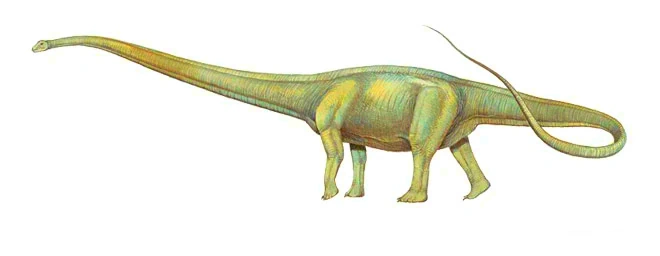 alt="Dali Erhai Lake Ecological Corridor from Xiaguan to Taoyuan"
/>
alt="Dali Erhai Lake Ecological Corridor from Xiaguan to Taoyuan"
/>
Eomamenchisaurus in Yunnan
Eomamenchisaurus (meaning “dawn Mamenchisaurus“) is a genus of mamenchisaurid sauropod dinosaur from the Middle Jurassic of Yuanmou, Yunnan, China. The type species is E. yuanmouensis, described by Lü Junchang et al. in 2008. Eastmanosteus is indeed a genus of extinct Dunkleosteoid placoderm fish belonging to the Arthrodira that lived during the Late Devonian period. It was closely related to the giant Dunkleosteus but differed in size, possessing a distinctive knobby bone ornamentation, a differently shaped nuchal plate, and a more zigzag pattern in the skull roof sutures.
Species of Eastmanosteus had powerful jaws with sharp cutting edges and were likely active predators. Fossils have been found in marine sediments from the Middle to Late Devonian in various parts of the world. They were medium to large fishes, with species like Eastmanosteus pustulosus and Eastmanosteus licharevi reaching lengths of approximately 3 meters. Complete exoskeletons with traces of soft tissues of Eastmanosteus calliaspis from Australia make it one of the best-known Dunkleosteoids.

 7 Days GolfingTour
7 Days GolfingTour
 8 Days Group Tour
8 Days Group Tour
 8 Days Yunnan Tour
8 Days Yunnan Tour
 7 Days Shangri La Hiking
7 Days Shangri La Hiking
 11 Days Yunnan Tour
11 Days Yunnan Tour
 6 Days Yuanyang Terraces
6 Days Yuanyang Terraces
 11 Days Yunnan Tour
11 Days Yunnan Tour
 8 Days South Yunnan
8 Days South Yunnan
 7 Days Tea Tour
7 Days Tea Tour
 8 Days Muslim Tour
8 Days Muslim Tour
 12 Days Self-Driving
12 Days Self-Driving
 4 Days Haba Climbing
4 Days Haba Climbing
 Tiger Leaping Gorge
Tiger Leaping Gorge
 Stone Forest
Stone Forest
 Yunnan-Tibet
Yunnan-Tibet
 Hani Rice Terraces
Hani Rice Terraces
 Kunming
Kunming
 Lijiang
Lijiang
 Shangri-la
Shangri-la
 Dali
Dali
 XishuangBanna
XishuangBanna
 Honghe
Honghe
 Kunming
Kunming
 Lijiang
Lijiang
 Shangri-la
Shangri-la
 Yuanyang Rice Terraces
Yuanyang Rice Terraces
 Nujiang
Nujiang
 XishuangBanna
XishuangBanna
 Spring City Golf
Spring City Golf
 Snow Mountain Golf
Snow Mountain Golf
 Stone Mountain Golf
Stone Mountain Golf















 What Our Customers Say?
What Our Customers Say?
